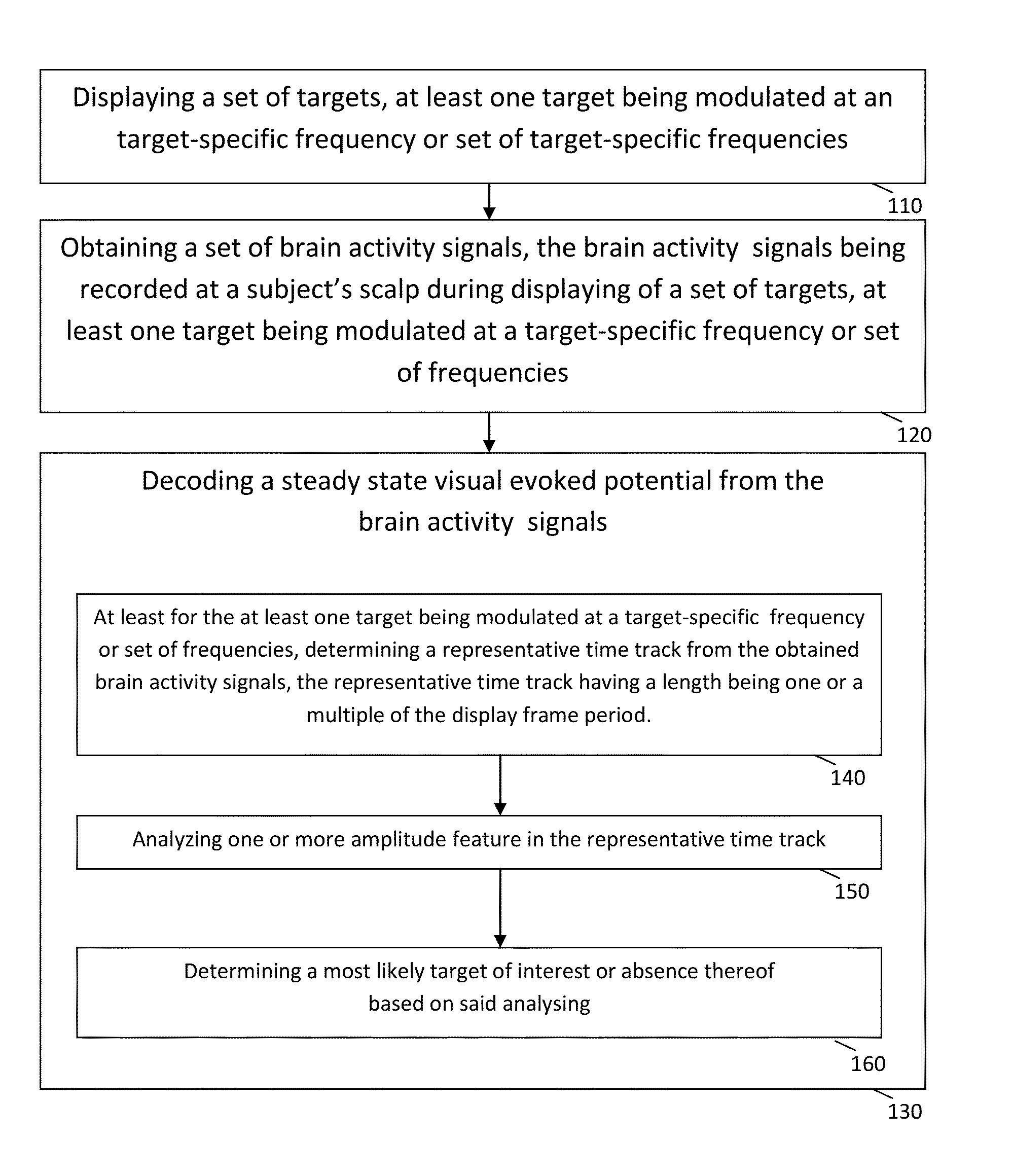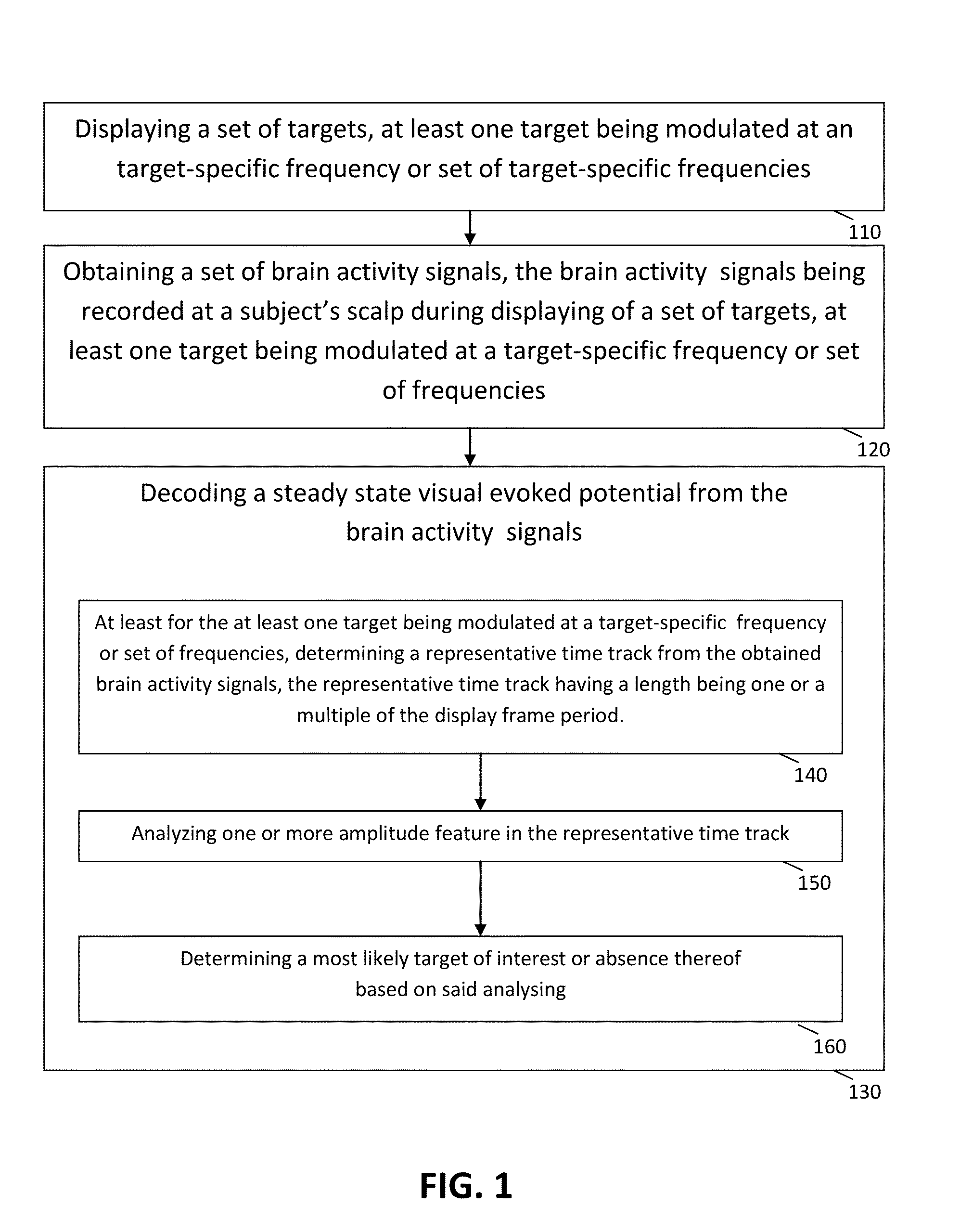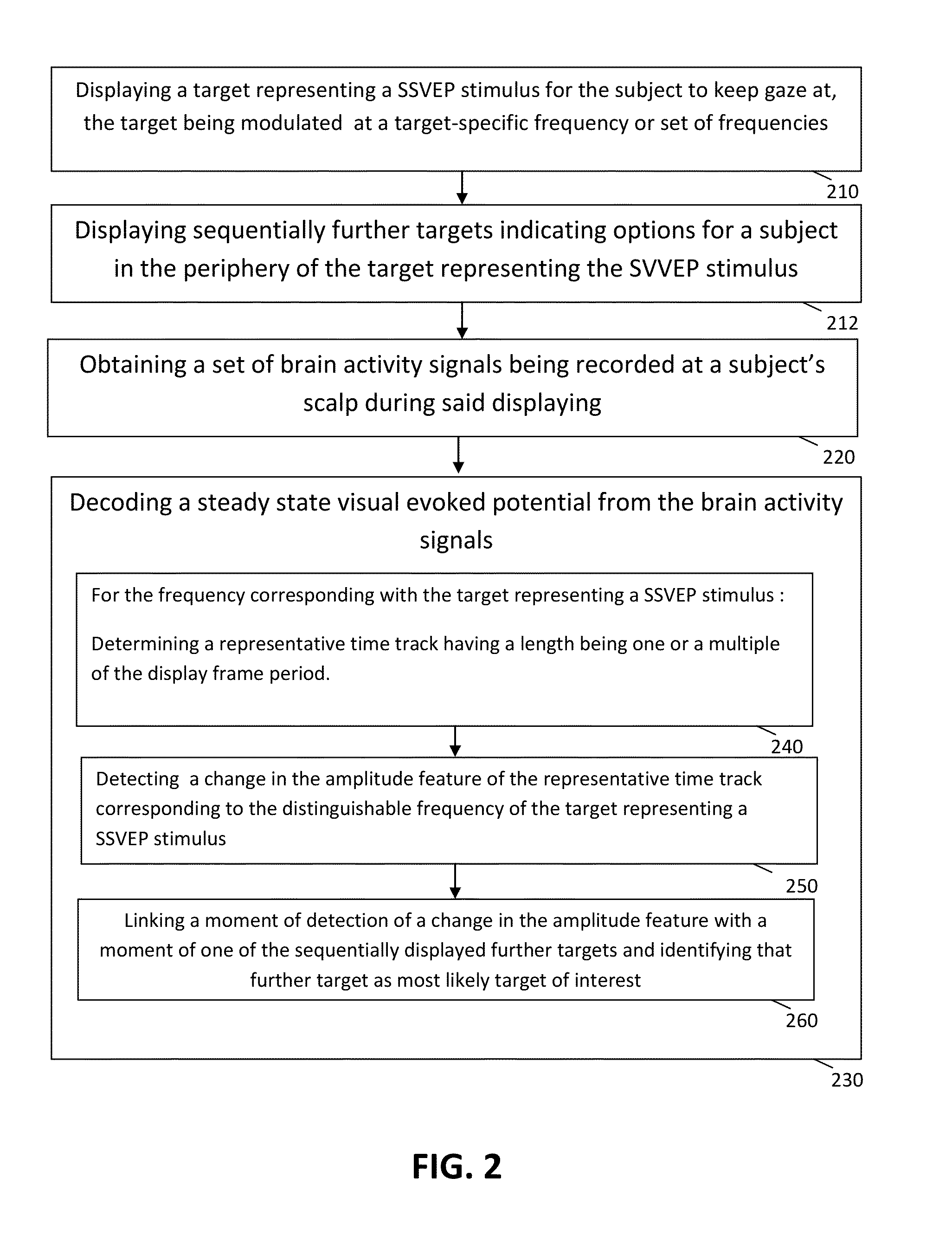The technology as it exists today faces two mayor limitations when applied for day-to-day use: good recording equipment is expensive, bulky, uncomfortable and requires the help of a second person to apply (1) and when compared to traditional input devices, such as keyboards, mice and game controllers, BCI control is slow and inaccurate (2).
One of the main problems with the above headsets is the low
signal-to-
noise ratio.
This poor performance brings about the second limitation.
Fast and accurate control requires a detailed decoding of the measured EEG
signal, which becomes increasingly hard when the algorithms not only have to deal with interfering unrelated brain activity, but also sensor
noise.
This is the main reason why many commercial products today offer very limited BCI control to the user, working with concepts as relaxation / stress, meditation and detecting the user's
mood, all of which boil down to analyzing different bands in the
frequency spectrum of the recorded signal.
Modern clinical EEG equipment provides a superior
signal to noise ratio, but has the downside of being not only expensive but also requiring the application of conductive gel and the help of a second person to place the electrodes on the
scalp.
These games are controlled by measuring the power of the user's brain activity in certain frequency bands (e.g. alpha, beta or mu power), which changes slowly, severely restricting the speed and accuracy of the control.
Some games effectively can only give the illusion of control to the player.
However, it has received much critique, as the brain activity of the player has very limited influence, as demonstrated by taking off the
headset and still being able to play the game by linking the electrodes together using a wet towel.
Just like the MindBall game, the MindFlex recording set is limited to recording alpha and theta band power.
However, the mental command appear too hard to reliably decode from the EEG signal, as many reviews of the
set point out that achieving control is very hard.
The Enobio set, developed by Starlab, aims for academic and clinical EEG research and therefore has no commercial game options at the time of writing.
Such a scheme doesn't allow the player to directly control the game in term of commands like ‘up’, ‘down’, ‘push this button’, but rather enhance the game with a new task: to concentrate while playing.
However, reviews indicate that the
system does not always live up to its expectations.
The challenge is to come up with a control scheme that allows the player to issue fast and accurate commands that are robust enough to work even when the
signal quality leaves much to be desired.
However, this technique requires the frequency of the stimulus to be extremely stable, something that is not easy to achieve with LCD screens and multitasking,
general purpose computers which are not designed for precision timing.
Since the spectral content of the EEG signal needs to be determined over a time window, the precision with which the
stimulus frequency can be detected impedes the possibility to perform a
rapid detection of the moment the subject looks away.
The detection problem, therefore, becomes more complex since now, one of several possible flickering frequencies fi need to be detected from the EEG recordings.
In
spite of the reported high transfer rates, achieving a reliable and fast classification still remains problematic.
Furthermore, when using too short intervals, neighboring frequencies can not be distinguished because of the limited
spectral resolution.
 Login to View More
Login to View More  Login to View More
Login to View More 


